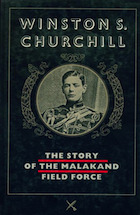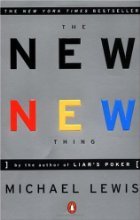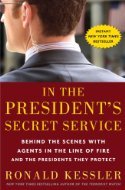Signed Find
Tag: Reading
Reading: Howard Hughes: Power, Paranoia & Palace Intrigue
Written by a Las Vegas journalist, this fairly recent Hughes book is really a collection of essays or articles on various subjects mostly related to Hughes’ Las Vegas era. The pricing of the Kindle edition is more appropriate given degree of content. One nice gem, the author also reviews other lesser know Hughes books in the back.
Schumacher, Geoff. Howard Hughes: Power, Paranoia & Palace Intrigue.
Reading: The Story of the Malakand Field Force by Winston Churchill
Reading: The Story of the Malakand Field Force by Winston Churchill
 The story of a young Winston Churchill in 1897 fighting fanatical tribal warriors in modern day Pakistan–see his chilling description of what we hear all too often in today’s news:
The story of a young Winston Churchill in 1897 fighting fanatical tribal warriors in modern day Pakistan–see his chilling description of what we hear all too often in today’s news:
Every influence, every motive, that provokes the spirit of murder among men, impels these mountaineers to deeds of treachery and violence. The strong aboriginal propensity to kill, inherent in all human beings, has in these valleys been preserved in unexampled strength and vigour. That religion, which above all others was founded and propagated by the sword–the tenets and principles of which are instinct with incentives to slaughter and which in three continents has produced fighting breeds of men–stimulates a wild and merciless fanaticism.
Wikipedia
I haven’t read this book yet, but came across of a reference to it in my current team read at the office (The Mission, The Men and Me, more about that in a future post) and was delighted to find the free Kindle edition of the eBook on Project Gutenberg. I believe this is the hardcover edition depicted by the cover image above.
Reading: The New New Thing
 As you can see, I’ve been on a bit of a Michael Lewis kick. Ironically, I’ve had this book the longest having picked it up at a discount bookstore in an outlet mall years ago. I was so proud of the deal I got ($4.50 for a $13.00 trade paperback) that I left the price sticker on the cover (typically a sin for the bibliophile). Groping around for something to distract myself from the misery of a cold which ruined our vacation plans a couple days ago, I finally took it off the shelf.
As you can see, I’ve been on a bit of a Michael Lewis kick. Ironically, I’ve had this book the longest having picked it up at a discount bookstore in an outlet mall years ago. I was so proud of the deal I got ($4.50 for a $13.00 trade paperback) that I left the price sticker on the cover (typically a sin for the bibliophile). Groping around for something to distract myself from the misery of a cold which ruined our vacation plans a couple days ago, I finally took it off the shelf.
The New New Thing follows Silicon Valley entrepreneur Jim Clark from Silicon Graphics to Netscape to Healtheon and beyond. It also spends an inordinate amount of time aboard his luxury sailing yacht Hyperion. In fact, it’s the highly detailed focus on the yacht I found to be somewhat tedious (although I must admit that it inspired my inner geek to explore home automation systems I can integrate with my Mac and iPhone). Being intimately familiar with the the browser wars and web technology, I also found some of those elements to be a bit personally redundant but certainly important to the lay reader.
There is no question Jim Clark is a visionary and great leader/attracter of engineering talent. He amassed a fortune by hitting not one, but three home runs (think billions not millions) in Silicon Valley. His restless nature, exploration and continuous learning are to be admired.
The author was clearly given amazing access to the Clark and the key players around him, which made me wonder why they permitted it. Lewis has a way of presenting the “characters” in his books in different lights; there are heros and villains, and certainly a point of view. It’s seems like a big chance for a businessman to take, but then again, being the central character in one of his books does seem to lead to a certain notoriety.
Lewis’ explanation (point of view) of the dot com phenomenon is concise and telling. You have a great idea, typically a recombination of existing talent and/or technology, but no real product. After attracting the credibility of venture capital investments, you build enough hype for an IPO, and bam, you now have valuable stock you can use to purchase the competitors and small companies with real products. You win.
It’s Lewis’ Hollywood analogy of Clark as the “Jack Nicholson” attached to the “script” of business idea (the “new new thing”) that explains the power dynamic Clark was able to harness in the Valley to build hype. Engineers and investors clambered to get involved in “Jim’s next thing”. Not a bad money machine.
Now off to write some automation code…
Lewis, Michael. The New New Thing.
Reading: The Big Short
 Ever since Moneyball, I’ve paid attention to what Michael Lewis writes about and have been looking forward to his new book, The Big Short: Inside the Doomsday Machine, about the subprime collapse and subsequent financial crisis. At long last, it was my weekend read and proved to be worth the wait.
Ever since Moneyball, I’ve paid attention to what Michael Lewis writes about and have been looking forward to his new book, The Big Short: Inside the Doomsday Machine, about the subprime collapse and subsequent financial crisis. At long last, it was my weekend read and proved to be worth the wait.
In typical fashion, it’s well paced with great depictions of interesting people who see the world a little differently. He explains everything about as clearly as you can (when describing financial instruments intentionally named and designed to be difficult to understand), and undoubtedly oversimplifies some concepts and omits details of other (such as Paulson’s gigantic short). Overall, however, the narrative is engaging and insightful and seems to a layman such as myself to be fairly balanced.
As with Moneyball, I find myself wanting to know more about (if not meet!) some of the central figures who in this case brilliantly shorted the market. Colorful people like Michael Burry and Steve Eisman who rejected conventional wisdom and profited wildly.
He provides a suitable indictment of those who should have prevented the disaster, summed up like this (emphasis mine):
The people in a position to resolve the financial crisis were, of course, the very same people who had failed to foresee it: Treasury Secretary Henry Paulson, future Treasury Secretary Timothy Geithner, Fed Chairman Ben Bernanke, Goldman Sachs CEO Lloyd Blankefein, Morgan Stanley CEO John Mack, Citigroup CEO Vikram Pandit, and so on… With them were a handful of government officials… All shared a distinction: They had proven far less capable of grasping basic truths in the heart of the U.S. financial system than a one-eyed money manager with Asperger’s syndrome.
It’s of course the tangents like Mike Burry’s Asperger’s condition that are some of the best elements of Lewis’ writing. People who see the world differently, and in this case, put their money where they mouth is.
Lewis, Michael. The Big Short: Inside the Doomsday Machine.
Unexpected Rewards from Daniel Pink, Michael Eisner and Reed Hastings
Daniel Pink takes on motivation in his new book Drive. I recently had the pleasure of hearing him speak in Pasadena, something I recommend to anyone given the opportunity (he’s an exceptional speaker, see his speaking schedule or this TED talk), where he reinforced a key message from his book about rewarding: when rewards are expected, performance suffers. “If you do X, then I’ll reward you with Y” scenarios undermine intrinsic motivation. In a typical job situation, assuming we’re paid enough of a baseline salary commensurate with our value, it’s the unexpected bonus that’s most effective.
This is precisely what I heard from Michael Eisner and Reed Hastings at a recent Churchill Club dinner in Santa Clara. With two very different takes on management, they had a lively discussion about succeeding in the “nimble” technology or more “traditional” Hollywood industries. Eisner as the elder statesmen of formal management, and Hastings as the up and coming entrepreneur with a new take on leadership–which is detailed, by the way, in the excellent Netflix culture deck. It was a lively conversation (you can also see this take on the culture clash).
What stood out for me on the heels of Daniel Pink’s talk, was when discussing how to compensate executives, the two agreed that “if-then” targeted bonuses do not align actions to long term interests of the company. Hastings recounted an event where Netflix had extra money and considered spending it on marketing to drive more subscriptions, which his executive declined as being too expensive on the margin. What if that executive had had a bonus target tied to subscription levels? Their motivation may have been suspect.
Eisner, in turn, describes his ideal model as paying a good salary and stock package (baseline rewards), but then providing unexpected bonuses when the executive demonstrates nimbleness or does something extraordinary. Exactly what Pink’s research confirms, and a testament to Eisner’s leadership ability and understanding of motivation, as well as the astuteness of Pink’s book.
As is fitting to the point here, sometimes the best parts of study and reflection are connecting the dots when you least expect them. Thanks to Daniel Pink and the Churchill Club for an unexpected reward!
Reading: In the President’s Secret Service
 There is nothing like being sidelined at the start of your winter holiday by a violent case of stomach flu making its way through the family. Well, as this was our fate this year thanks to some inconsiderate partygoer, about the only positive outcome was some late night reading time that my recovery afforded.
There is nothing like being sidelined at the start of your winter holiday by a violent case of stomach flu making its way through the family. Well, as this was our fate this year thanks to some inconsiderate partygoer, about the only positive outcome was some late night reading time that my recovery afforded.
While my to-read stack has been accumulating during many months of busy work and family life and is now three full bookshelves long, I simply grabbed off the pile of recent Christmas gifts and dove in.
In the President’s Secret Service by Ronald Kessler provides a brief history of the Secret Service along with many anecdotes about several of the more recent presidents and their families. While tabloidish at times, it also makes a serious case to the management of the Service and its sponsors in the federal government to modernize their equipment, improve the retention of agents, and either expand their budget or limit their scope.
Lyndon Johnson, Hillary Clinton, Al Gore and the entire Carter family are depicted as nearly deplorable at times, while Ford, Reagan and both Bush families honorable and respectful. Rather than introduce a spoiler, I’ll let you discover for yourself the nickname given to LBJ by those exposed to his bare character. An assessment of the current administration is polite but guarded.
As someone with both a fascination of and tremendous amount of respect for a group of dedicated professionals willing to take a bullet for their client, I found the book to be both a quick, entertaining read, but also a somewhat depressing case study of poor management and unevolved thinking.
Kessler, Ronald. In the President’s Secret Service.
Reading: Rapt: Attention and the Focused Life
 Not since Mihaly Csikszentmihalyi’s book Flow, have I encountered such a good book about attention that, you guessed it, captured my attention. In Rapt: Attention and the Focused Life, Winifred Gallagher discusses the basic premise that you are what you pay attention to, or to be more precise, what you choose to pay attention to.
Not since Mihaly Csikszentmihalyi’s book Flow, have I encountered such a good book about attention that, you guessed it, captured my attention. In Rapt: Attention and the Focused Life, Winifred Gallagher discusses the basic premise that you are what you pay attention to, or to be more precise, what you choose to pay attention to.
She blends contemporary psychology with modern neuroscience to explain the phenomenon of attention, and debunk common misconceptions about things like multitasking–one second, off to check my twitter feed–ok, now I’m back–what was I saying–oh yeah, something about multitasking. Or was it attention. Get the idea?
Anyhow, the book is replete with cited studies and is well footnoted. Common themes around mindfulness meditation, effective “self-distraction”, and utilizing the “zone” bring the theoretical conversation back to day-to-day life and will undoubtedly make you look at your daily routine differently.
It turns out that Gallagher has also written about one of my other favorite subjects, how our surroundings can impact our thoughts and emotions in The Power of Place. My reading stack just got a little taller.
Gallagher, Winifred. Rapt: Attention and the Focused Life
Reading: Tribes
 This weekend’s read was Seth Godin’s Tribes, essentially a collection of tidbits on leadership in today’s increasing connected world. The internet has eliminated geography and reduced the costs of communication to nil. Factor in the rise of social networking, and a space for highly leveraged leadership opens up.
This weekend’s read was Seth Godin’s Tribes, essentially a collection of tidbits on leadership in today’s increasing connected world. The internet has eliminated geography and reduced the costs of communication to nil. Factor in the rise of social networking, and a space for highly leveraged leadership opens up.
Seth basically challenges the reader. While some portions seemed a little disjointed, I did appreciate his consistent theme of challenging the status quo and dog-eared this alliteration on leadership:
Leaders create culture around their goal and involve others in that culture.
Leaders have an extraordinary amount of curiosity about the world they’re trying to change.
Leaders use charisma (in a variety of forms) to attract and motivate followers.
Leaders communicate their vision of the future.
Leaders commit to a vision and make decisions based on that committment.
Leaders connect their followers to one another.
And in accordance with the author’s recommendation, it’s sitting ready if you’d like to borrow it.
Godin, Seth. Tribes: We Need You To Lead Us
Reading: Lever Action
 I first encountered L. Neil Smith as an author of science fiction (notably Rosewell, Texas and The Probability Broach graphic novels) and particularly enjoyed his use of alternate historical timelines and variations on historical figures. What stood out most however, was how consistent the theme of personal liberty was embodied in his characters and narratives.
I first encountered L. Neil Smith as an author of science fiction (notably Rosewell, Texas and The Probability Broach graphic novels) and particularly enjoyed his use of alternate historical timelines and variations on historical figures. What stood out most however, was how consistent the theme of personal liberty was embodied in his characters and narratives.
Recently, I found this collection of his essays on personal liberty and it became quickly apparent to me that Smith is one of the strongest defenders of the Bill of Rights around today (particularly its “enforcement”). In clear, engaging and often humorous language, Smith will have you questioning some of your basic assumptions about “rights” in America.
I’m sure you won’t agree with everything he says (I found some of his “colorful” language around contemporary leaders and events tiresome and unnecessary), but he will make you think. As a small tribute to the spirit of the book, I’ve included the text of the first ten amendments below, since I know at least for me, it had been a while since I actually read them:
- Amendment I – Congress shall make no law respecting an establishment of religion, or prohibiting the free exercise thereof; or abridging the freedom of speech, or of the press; or the right of the people peaceably to assemble, and to petition the Government for a redress of grievances.
- Amendment II – A well regulated Militia, being necessary to the security of a free State, the right of the people to keep and bear Arms, shall not be infringed.
- Amendment III – No Soldier shall, in time of peace be quartered in any house, without the consent of the Owner, nor in time of war, but in a manner to be prescribed by law.
- Amendment IV– The right of the people to be secure in their persons, houses, papers, and effects, against unreasonable searches and seizures, shall not be violated, and no Warrants shall issue, but upon probable cause, supported by Oath or affirmation, and particularly describing the place to be searched, and the persons or things to be seized.
- Amendment V – No person shall be held to answer for a capital, or otherwise infamous crime, unless on a presentment or indictment of a Grand Jury, except in cases arising in the land or naval forces, or in the Militia, when in actual service in time of War or public danger; nor shall any person be subject for the same offence to be twice put in jeopardy of life or limb; nor shall be compelled in any criminal case to be a witness against himself, nor be deprived of life, liberty, or property, without due process of law; nor shall private property be taken for public use, without just compensation.
- Amendment VI – In all criminal prosecutions, the accused shall enjoy the right to a speedy and public trial, by an impartial jury of the State and district wherein the crime shall have been committed, which district shall have been previously ascertained by law, and to be informed of the nature and cause of the accusation; to be confronted with the witnesses against him; to have compulsory process for obtaining witnesses in his favor, and to have the Assistance of Counsel for his defence.
- Amendment VII – In Suits at common law, where the value in controversy shall exceed twenty dollars, the right of trial by jury shall be preserved, and no fact tried by a jury, shall be otherwise re-examined in any Court of the United States, than according to the rules of the common law.
- Amendment VIII – Excessive bail shall not be required, nor excessive fines imposed, nor cruel and unusual punishments inflicted.
- Amendment IX -The enumeration in the Constitution, of certain rights, shall not be construed to deny or disparage others retained by the people.
- Amendment X – The powers not delegated to the United States by the Constitution, nor prohibited by it to the States, are reserved to the States respectively, or to the people.
You can read more about the Bill of Rights, and see the original document, at the National Archives.
Smith, L. Neil. Lever Action
